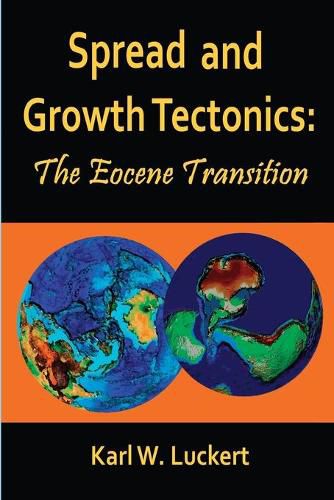Readings Newsletter
Become a Readings Member to make your shopping experience even easier.
Sign in or sign up for free!
You’re not far away from qualifying for FREE standard shipping within Australia
You’ve qualified for FREE standard shipping within Australia
The cart is loading…






pp. xv-xvi. Accolades given by representatives of Plate Tectonics science-to Alfred Wegener as their first founder-are a nice gesture toward German-born scientists in the English-speaking world. They are, however, a gesture that has bequeathed ambivalent consequences. Continental Drift and wandernde Kontinente do not complement the worldwide Mid-ocean Spreading Rift which Plate Tectonics explorers have discovered during the 1960s. While half a century earlier Wegener has argued for Continental Drift, he may indeed have alluded to the Atlantic separation as rifting. Nevertheless, having been granted first founder status, on the basis of Continental Drift seems to have impeded progress in Plate Tectonics reasoning. The landmasses which have gotten torn, by rifts that widened and spread oceans, have nothing in common with wandering or drifting continents. All the seven continents on Planet Earth are still today touching at least one of their original neighbors. Therefore, tracing continents tectonically to their original positions is not all that difficult. However, what is difficult and even impossible to accommodate to Earth science are imaginary drifters. Continental Drift theory has misled a majority of explorers into postulating ocean floor subduction and convection currents in the mantle -essentially to enable the continents, which an acknowledged founder has mentioned, to continue wandering in his honor. Such ancillary hypotheses do not help explain the known data. They only assist in the theoretical disposal of imaginary surplus ocean floor; they clear the road for Vagabund continents. They enable scientists to think of continents as having wandered where none of them ever was. Of course, Alfred Wegener worked at a time before anyone knew the Mid-ocean Spreading Rift or about its habit of leaving magnetic footprints in ocean floor lava. Greater help than Wegener’s hypothesis to Plate Tectonic science, however, is the new ocean floor chronology which the oceanographers themselves have created. The new Isochrone-maps provide the best information about where on Earth, in the course of 200 million years, our seven continents may have been located in relation to one another.
$9.00 standard shipping within Australia
FREE standard shipping within Australia for orders over $100.00
Express & International shipping calculated at checkout
pp. xv-xvi. Accolades given by representatives of Plate Tectonics science-to Alfred Wegener as their first founder-are a nice gesture toward German-born scientists in the English-speaking world. They are, however, a gesture that has bequeathed ambivalent consequences. Continental Drift and wandernde Kontinente do not complement the worldwide Mid-ocean Spreading Rift which Plate Tectonics explorers have discovered during the 1960s. While half a century earlier Wegener has argued for Continental Drift, he may indeed have alluded to the Atlantic separation as rifting. Nevertheless, having been granted first founder status, on the basis of Continental Drift seems to have impeded progress in Plate Tectonics reasoning. The landmasses which have gotten torn, by rifts that widened and spread oceans, have nothing in common with wandering or drifting continents. All the seven continents on Planet Earth are still today touching at least one of their original neighbors. Therefore, tracing continents tectonically to their original positions is not all that difficult. However, what is difficult and even impossible to accommodate to Earth science are imaginary drifters. Continental Drift theory has misled a majority of explorers into postulating ocean floor subduction and convection currents in the mantle -essentially to enable the continents, which an acknowledged founder has mentioned, to continue wandering in his honor. Such ancillary hypotheses do not help explain the known data. They only assist in the theoretical disposal of imaginary surplus ocean floor; they clear the road for Vagabund continents. They enable scientists to think of continents as having wandered where none of them ever was. Of course, Alfred Wegener worked at a time before anyone knew the Mid-ocean Spreading Rift or about its habit of leaving magnetic footprints in ocean floor lava. Greater help than Wegener’s hypothesis to Plate Tectonic science, however, is the new ocean floor chronology which the oceanographers themselves have created. The new Isochrone-maps provide the best information about where on Earth, in the course of 200 million years, our seven continents may have been located in relation to one another.